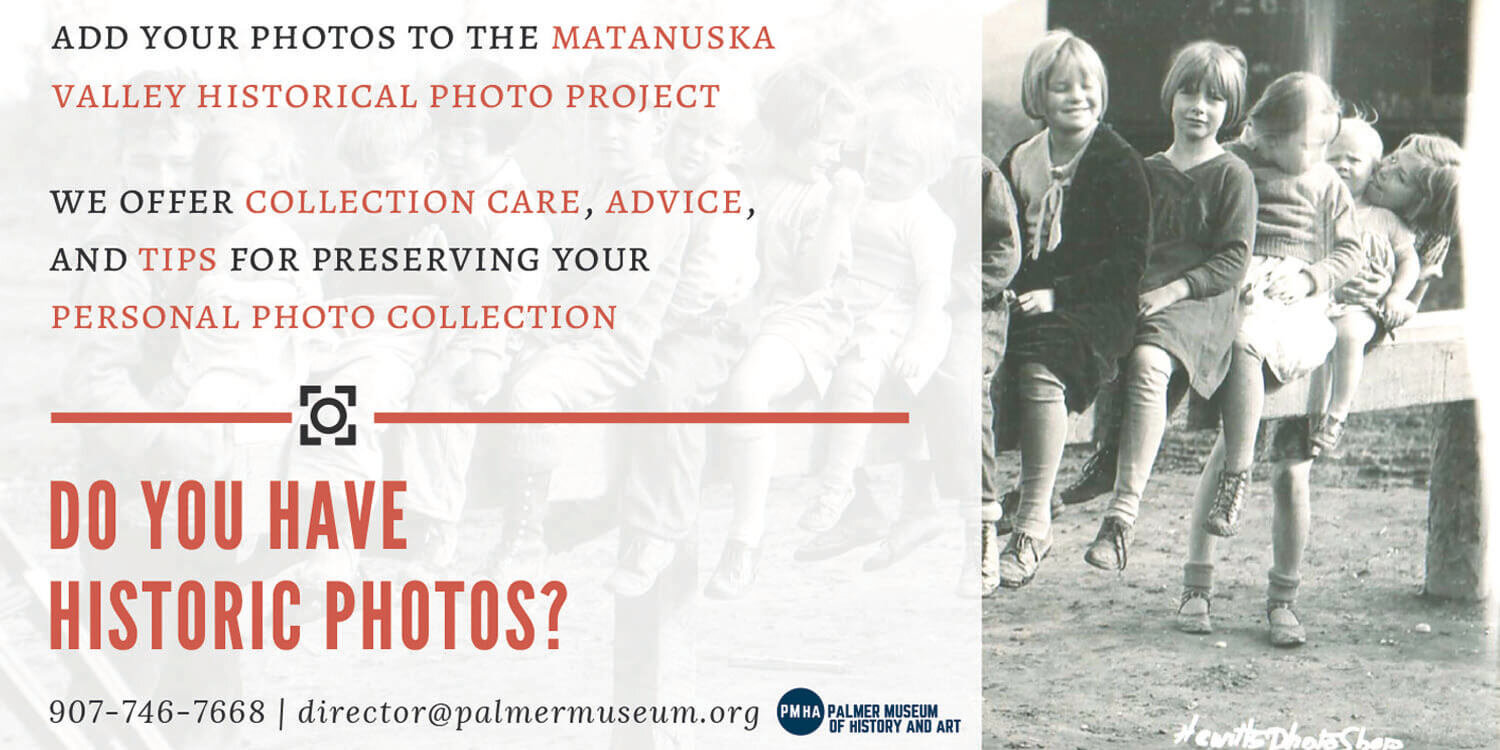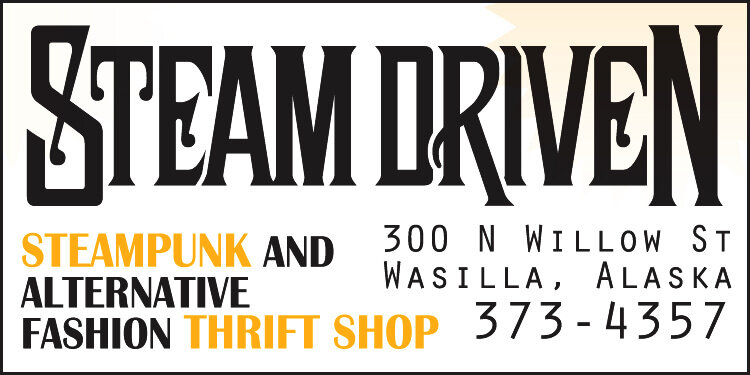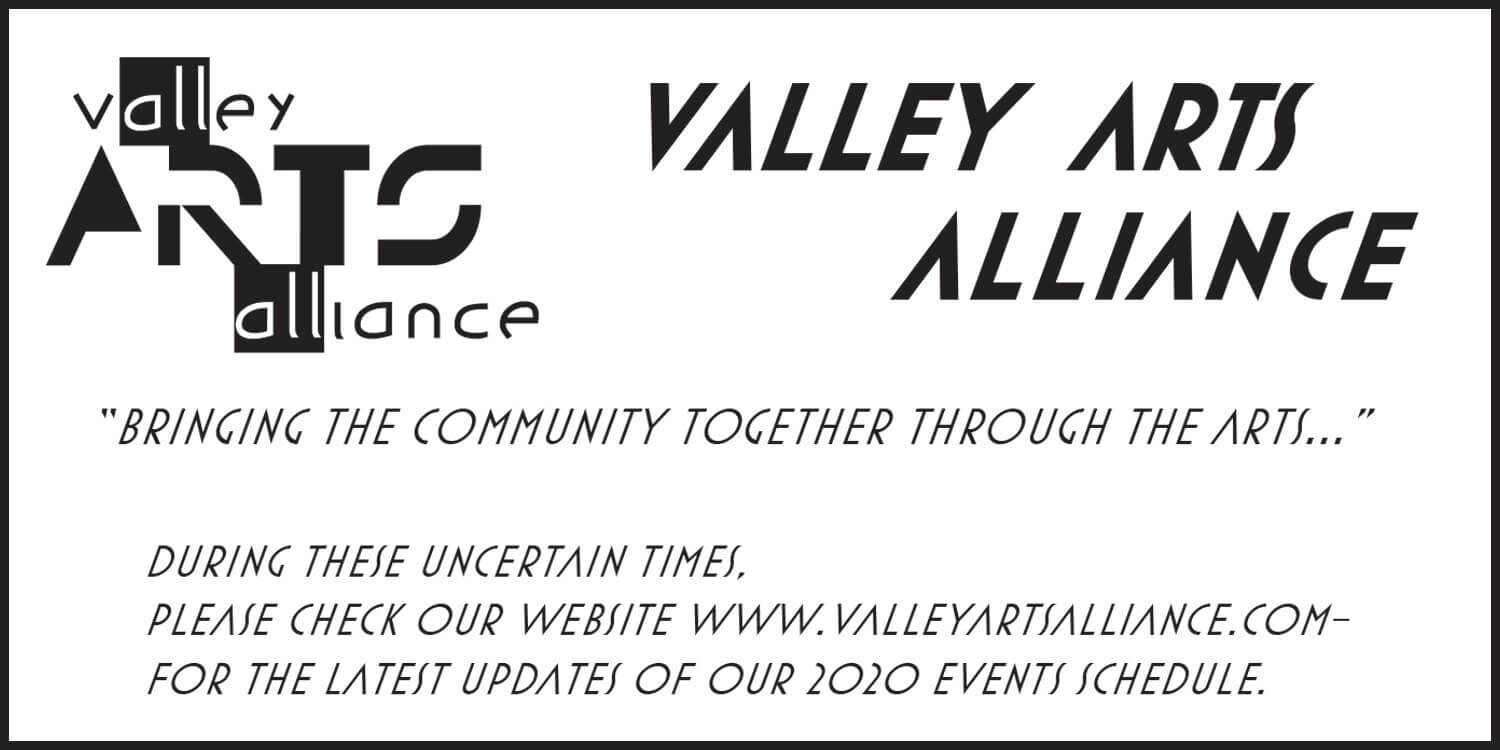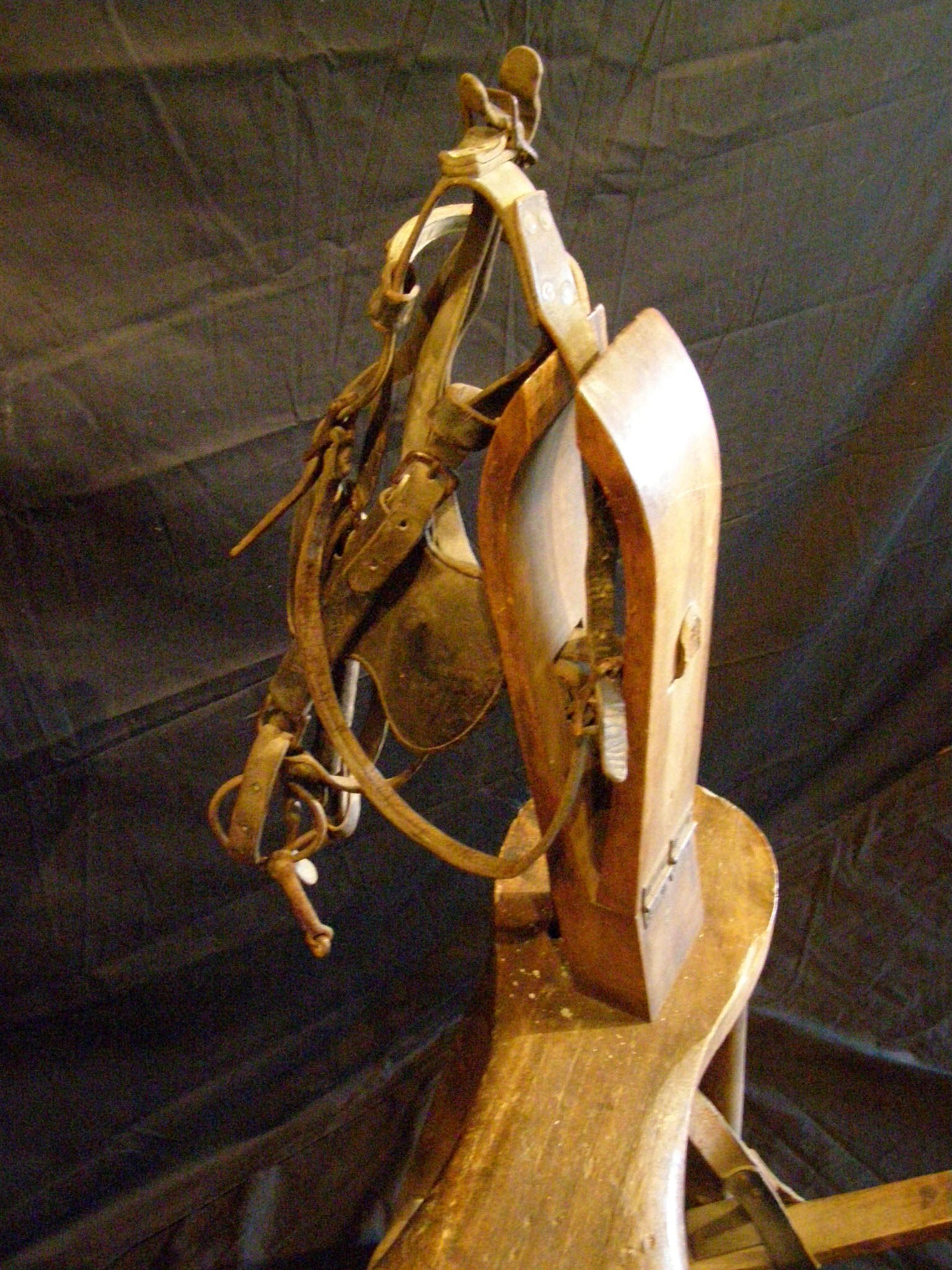
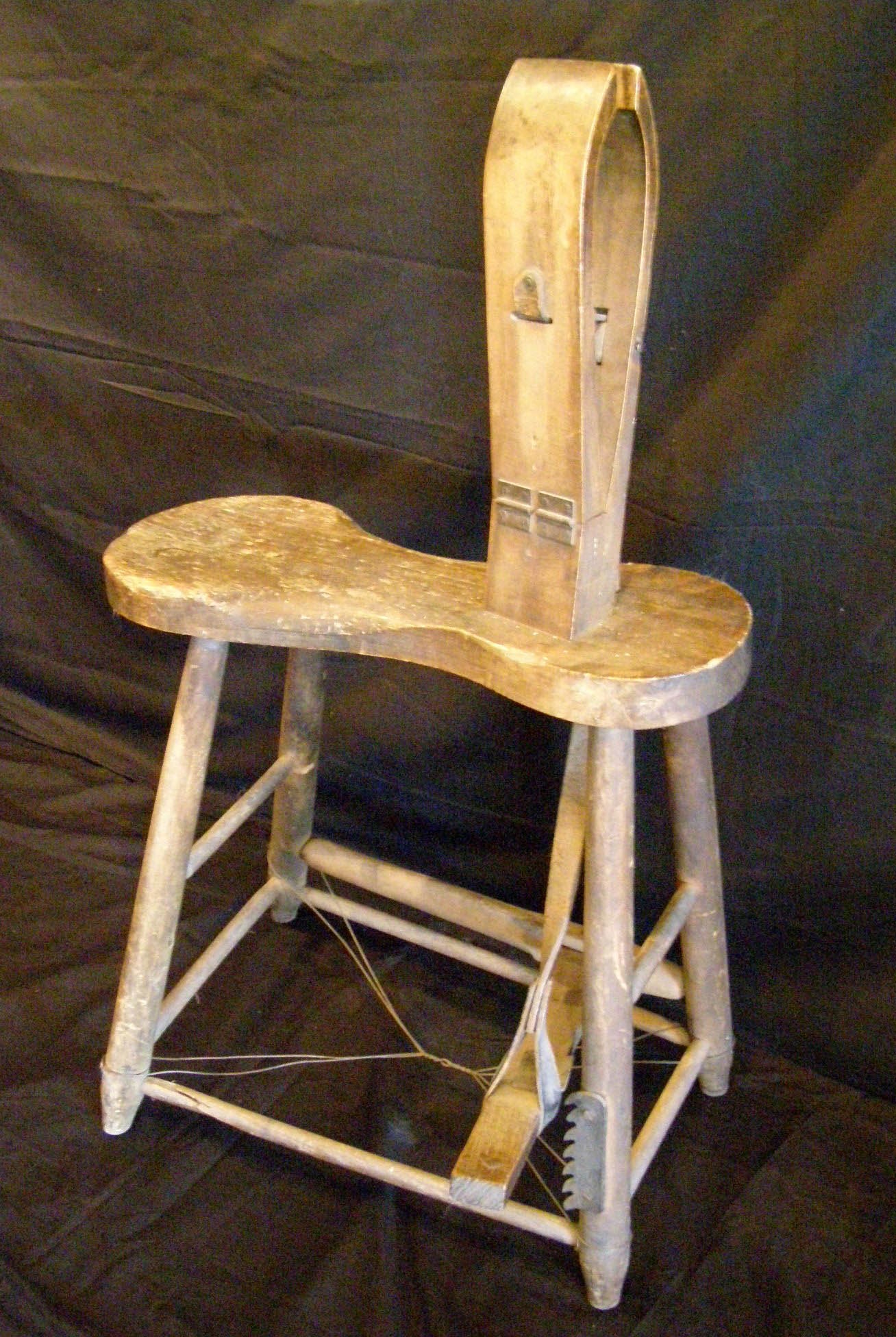
Contributed by Richard Estelle
One object often on display at the Museum that elicits the question, “What’s that?” is a device not commonly seen since the horse and buggy days. In times past, when “horsepower” really meant “horse power”, a wide array of leather straps, snaps, buckles, rings and hooks were used to connect horses to machines they were to pull. Teams of two, four, six or more horses pulling plows, grain binders, logging chains and freight wagons would be connected together, and to the equipment, by yards of leather rigging.
Constant strain and wear on the harnesses meant almost constant need for their maintenance and repair. When repairs were required, the farmer or teamster would turn to his “harness horse” or “harness vise” to ease the chore. He’d sit astraddle the seat facing the vertical wooden jaws. One jaw is stationary while the other is hinged. The moveable jaw has a leather strap attached which passes through a slot in the stationary jaw and descends to a foot pedal below. When the operator depressed the pedal with his foot, the strap drew the vise jaws together. The pedal was then hooked on a toothed metal bracket below to hold the jaws tight.
By capturing his broken harness between the vise jaws, the farmer was better able to hold the straps straight so patches could be sewn on, new adjustment holes punched, or broken hardware replaced. The harness horse may not have pulled a plow, but it made it possible to keep a real horse harnessed up to do so.














